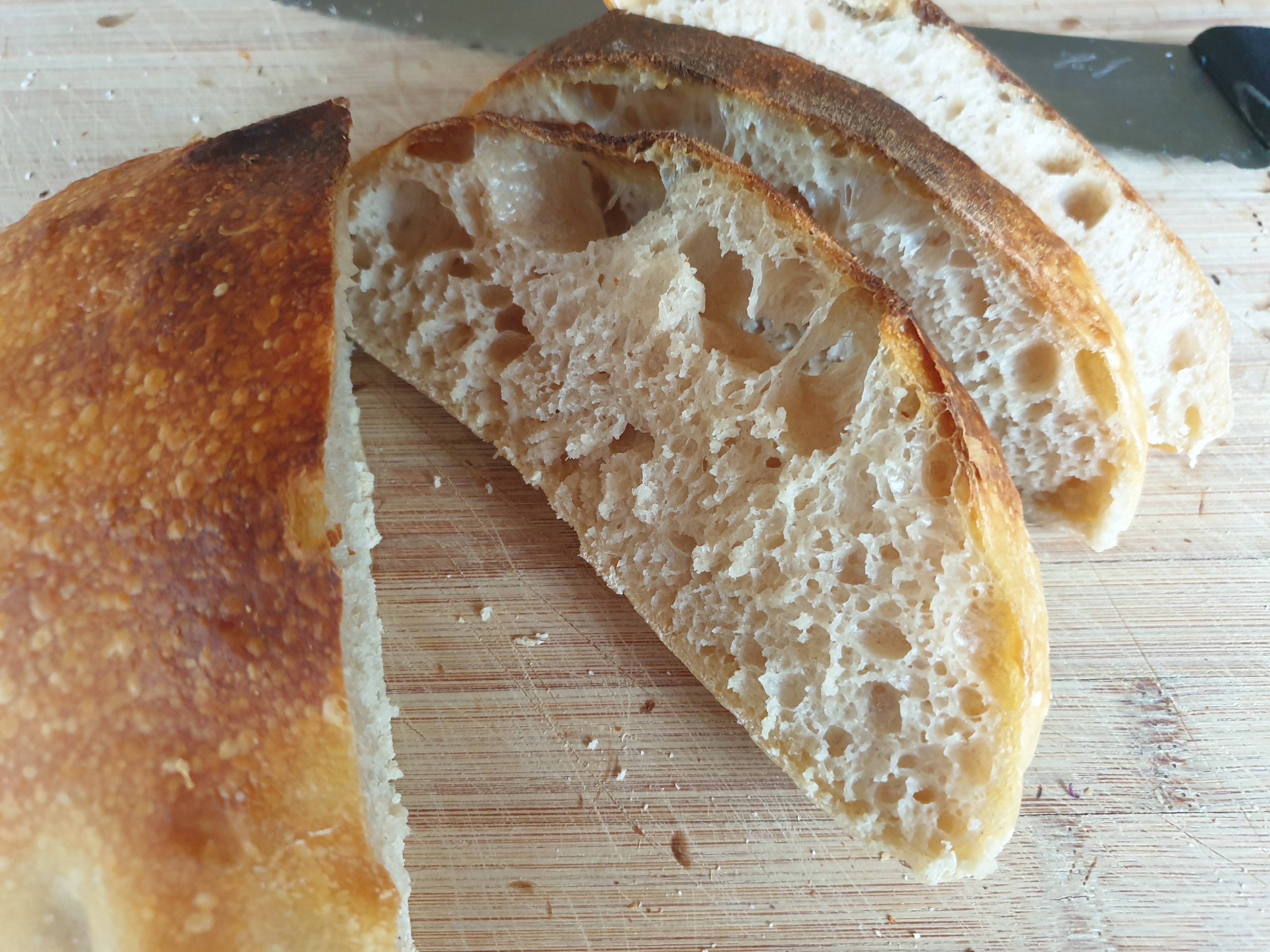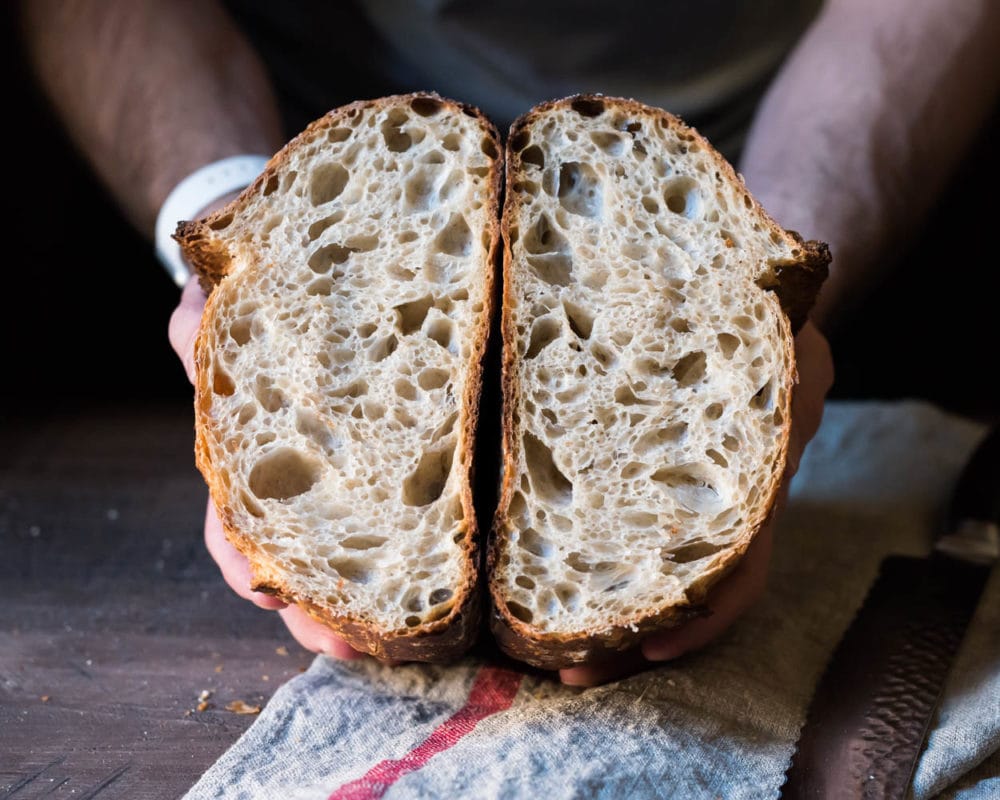Embark on a culinary journey as we delve into the world of sourdough bread, a beloved staple with a rich history and tantalizing flavor. From its humble origins to its nutritional prowess, sourdough has captivated taste buds for centuries. In this comprehensive guide, we’ll unveil the secrets to crafting the perfect sourdough loaf, exploring its variations, troubleshooting common challenges, and sharing tips for preserving its freshness.
Let’s dive into the art of sourdough and discover the joy of baking this delectable bread at home.
Sourdough bread is a testament to the power of time and fermentation. Its distinct tangy flavor and airy texture result from a natural leavening process involving a sourdough starter, a symbiotic culture of wild yeast and bacteria. This ancient technique not only enhances the bread’s taste but also bestows it with an array of health benefits, including improved digestion and nutrient absorption.
As we delve into the intricacies of sourdough baking, you’ll gain the knowledge and confidence to create your own mouthwatering loaves.
Introduction

Sourdough bread has become increasingly popular due to its unique flavor, texture, and health benefits. Its origins can be traced back to ancient civilizations, where it was a staple food.
Sourdough bread is made using a natural sourdough starter, which is a mixture of flour and water that is fermented by wild yeast and bacteria. This fermentation process gives sourdough bread its characteristic tangy flavor and chewy texture.
Nutritional Benefits
Sourdough bread is a good source of fiber, which is important for digestive health. It is also low in glycemic index, which means it releases energy slowly into the bloodstream, helping to keep you feeling full and satisfied.
In addition, sourdough bread contains prebiotics, which are beneficial bacteria that can help to improve gut health. It is also a good source of vitamins and minerals, including iron, zinc, and magnesium.
Unique Characteristics
Sourdough bread has a number of unique characteristics that set it apart from other types of bread.
- Tangy flavor: The fermentation process gives sourdough bread its characteristic tangy flavor.
- Chewy texture: Sourdough bread has a chewy texture that is due to the long fermentation process.
- Long shelf life: Sourdough bread has a longer shelf life than other types of bread due to the acidity of the sourdough starter.
Ingredients and Techniques
Creating sourdough bread requires a combination of essential ingredients and meticulous techniques. High-quality ingredients play a crucial role in determining the final flavor, texture, and nutritional value of the bread.
The foundation of sourdough bread lies in the sourdough starter, a fermented mixture of flour and water that imparts a distinctive sour flavor and acts as a natural leavening agent. The starter should be fed and maintained regularly to keep it active and healthy.
Essential Ingredients
- Bread flour: High in protein content, providing a strong gluten network that gives the bread its structure and elasticity.
- Water: The amount and temperature of water influence the hydration level of the dough, affecting its texture and fermentation.
- Salt: Enhances flavor and controls fermentation.
- Sourdough starter: Provides acidity, flavor, and leavening.
Step-by-Step Process
Creating a Sourdough Starter
To create a sourdough starter, combine equal parts by weight of bread flour and water in a clean glass jar. Stir thoroughly and cover loosely with a cheesecloth or lid. Store at room temperature (around 70-75°F) and feed daily with equal parts flour and water.
The starter will develop a tangy aroma and become bubbly, indicating its readiness.
Mixing and Kneading the Dough
Combine the sourdough starter, bread flour, water, and salt in a large bowl. Mix until a shaggy dough forms. Transfer to a lightly floured surface and knead for 5-10 minutes until the dough becomes smooth and elastic. Form the dough into a ball and place it in a lightly oiled bowl.
Proofing and Baking the Bread
Cover the dough and let it proof at room temperature for 8-12 hours, or until doubled in size. Punch down the dough and shape it into a loaf. Place the loaf in a floured banneton or proofing basket and proof for an additional 1-2 hours.
Preheat the oven to 450°F. Transfer the loaf to a baking sheet and score the top with a sharp knife. Bake for 30-40 minutes, or until the crust is golden brown and the internal temperature reaches 200-210°F.
Variations and Flavor Profiles

Sourdough bread offers a diverse range of variations, each with its unique flavor and texture profile. Experimenting with different flours and add-ins can transform the taste and characteristics of your sourdough.
Whole Wheat Sourdough
Whole wheat flour imparts a nutty, earthy flavor and denser texture to sourdough bread. It is a rich source of fiber, vitamins, and minerals.
Rye Sourdough
Rye flour adds a distinctive sourness and dense, chewy texture to sourdough. It is lower in gluten than wheat flour, resulting in a slightly different rise.
Sourdough with Seeds or Nuts
Incorporating seeds or nuts into sourdough dough enhances its flavor and nutritional value. Sunflower seeds, flax seeds, and walnuts add a crunchy texture and nutty flavor, while pumpkin seeds and chia seeds provide a boost of omega-3 fatty acids.
Troubleshooting and Tips
Baking sourdough bread can be a rewarding experience, but it can also come with its challenges. Here are some common problems and solutions to help you troubleshoot your sourdough journey.
Sourdough Starter Not Rising
A sluggish starter can be frustrating. Here are some reasons why it might not be rising:
- Lack of food: Feed your starter regularly with equal parts flour and water.
- Temperature: Starters thrive at around 75-85°F (24-29°C). Keep it in a warm spot or use a heating pad.
- Chlorinated water: Chlorine can kill the beneficial bacteria in your starter. Use filtered or spring water instead.
Bread Not Rising Properly
If your bread is not rising as expected, consider these factors:
- Starter strength: Make sure your starter is active and bubbly before using it.
- Dough hydration: The amount of water in your dough affects its rise. Adjust the water gradually until you get the desired consistency.
- Over-kneading: Kneading develops the gluten, but over-kneading can toughen the bread and prevent it from rising.
Bread Having a Dense Crumb
A dense crumb can be caused by several factors:
- Under-fermentation: Allow your dough to ferment long enough to develop flavor and rise properly.
- Over-proofing: If the dough is proofed for too long, the yeast will run out of food and the bread will collapse.
- Dense flour: Bread flour has a higher protein content than all-purpose flour, which can result in a denser crumb.
Storage and Preservation
Sourdough bread is a naturally fermented bread that can be stored at room temperature for several days. However, to extend its shelf life, it is best to store it in a cool, dry place, such as a bread box or a paper bag.
Sourdough bread can also be frozen for up to 3 months. When freezing sourdough bread, it is important to wrap it tightly in plastic wrap or aluminum foil to prevent freezer burn.
Slicing
Sourdough bread can be sliced and stored in the refrigerator for up to 5 days. When slicing sourdough bread, it is important to use a sharp knife to prevent the bread from tearing.
Keeping Sourdough Bread Fresh and Flavorful
To keep sourdough bread fresh and flavorful, it is important to store it properly and to consume it within a few days of baking. Sourdough bread can be refreshed by spraying it with water and reheating it in the oven.
This will help to restore the bread’s crust and flavor.
Last Word
Our exploration of sourdough has illuminated its rich history, nutritional value, and the artistry involved in crafting the perfect loaf. Whether you’re a seasoned baker or a curious novice, we hope this guide has empowered you with the knowledge and inspiration to embark on your sourdough journey.
Remember, the beauty of sourdough lies in its flexibility and adaptability. Experiment with different flours, add-ins, and techniques to discover your unique sourdough signature. As you savor each slice, appreciate the time and care that went into its creation. Happy baking, and may your sourdough endeavors be filled with joy and deliciousness.
FAQs
How do I know if my sourdough starter is ready to use?
Your sourdough starter is ready to use when it passes the float test. Drop a small piece of the starter into a glass of water. If it floats, your starter is active and ready to leaven your bread.
Why is my sourdough bread dense and crumbly?
Dense and crumbly sourdough bread can result from several factors, such as over-proofing, insufficient kneading, or an inactive starter. Ensure your starter is active, knead the dough thoroughly, and proof it for the appropriate amount of time.
How can I store my sourdough bread to keep it fresh?
Store your sourdough bread at room temperature for up to 3 days. For longer storage, wrap it tightly in plastic wrap or place it in a freezer-safe bag and freeze it for up to 2 months.
